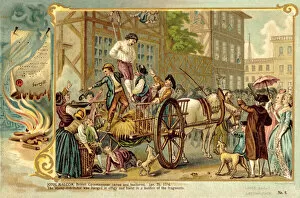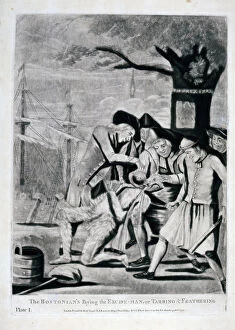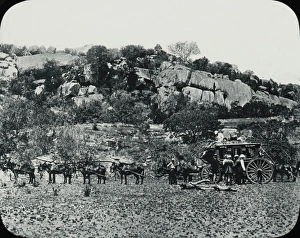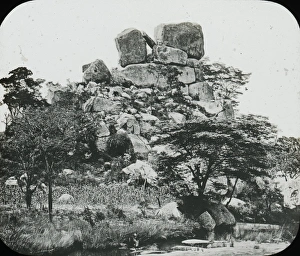Tarred Collection
"Tarred: A Historical Practice of Public Shaming and Resistance" In the late 18th century
All Professionally Made to Order for Quick Shipping
"Tarred: A Historical Practice of Public Shaming and Resistance" In the late 18th century, a powerful form of public humiliation known as tarring and feathering emerged as a means of protest and resistance. One such event captured in lithographs like "The Bostonians Paying the Exciseman, or Tarring & Feathering" depicted the anger and defiance of American colonists against British taxation. This practice involved covering individuals with hot tar and then applying feathers to their bodies, turning them into grotesque figures that were paraded through town squares. The aim was not only to shame but also to send a clear message to those who dared challenge authority. Across continents, similar acts took place. In Donegal, Ireland, fisher folk using traditional boats called curraghs faced this punishment for defying local customs or regulations. It served as a stark reminder that even in remote communities, dissent would not be tolerated. Not limited to commoners alone, even high-ranking officials fell victim to this brutal treatment. John Malcolm, a British Commissioner during colonial times found himself tarred and feathered on January 25th, 1774. This act demonstrated that no one was exempt from the wrath of an outraged populace. As time went on, other forms of public shaming gained popularity. "Riding the rail, " depicted in engravings like "An American Editor (Mr Ambrose Kimball) riding the Rail, " involved strapping someone onto wooden beams before being carried through town while jeered at by onlookers. While these practices may seem barbaric today, they symbolize an era when people felt compelled to take drastic measures against perceived injustices. These images serve as reminders of our collective history - both its triumphs and its darker moments - urging us never to forget how far we have come in our pursuit of justice and equality.
















